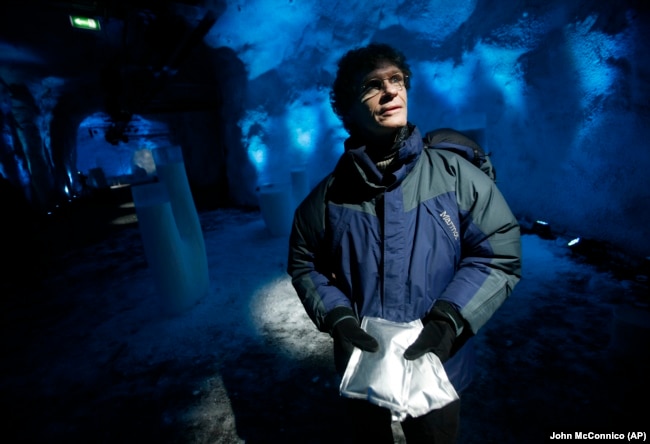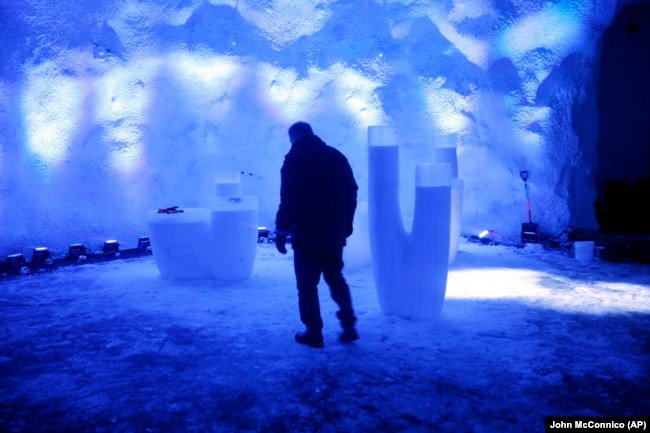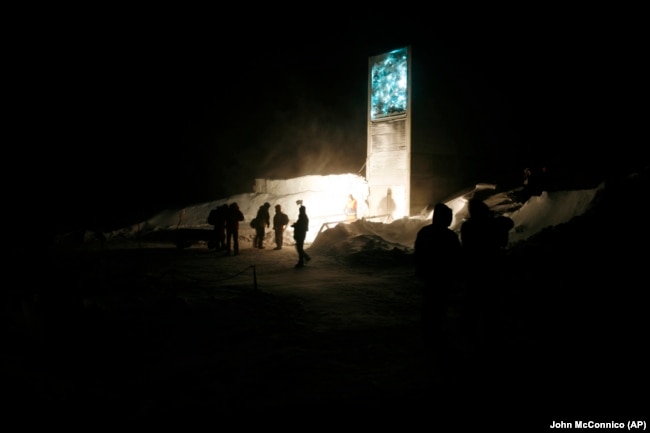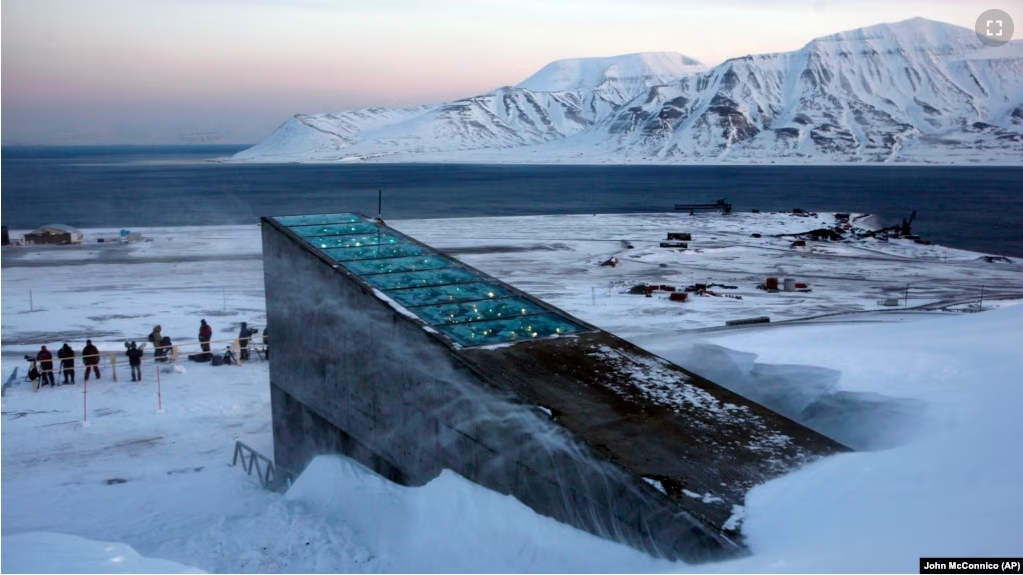About 20 years ago, Cary Fowler and Geoffrey Hawtin wanted to prevent hunger and protect the world’s food supply. The two men imagined a so-called “doomsday vault” for plant seeds. (A vault is a secure storage structure.)
Fowler and Hawtin’s goal was to keep a supply of seeds safe if existing seed banks were threatened by war, climate change, or other crises. They decided to build their storage building into the side of a mountain north of the Arctic Circle.
“To a lot of people today, it sounds like a perfectly reasonable thing to do,” Fowler said from Saudi Arabia in an interview with the Associated Press. Seeds, he added, are a valuable natural resource that needs protection.
But Fowler said: “Fifteen years ago, shipping a lot of seeds to the closest place to the North Pole that you can fly into (and) putting them inside a mountain…” did not sound reasonable. In his words, it was “…the craziest idea anybody ever had.”

The World Food Prize
Their idea became the Svalbard Global Seed Vault on the Norwegian island of Svalbard. The vault opened in 2008 and now holds 1.25 million seed samples from nearly every country in the world. The structure was built into the side of a mountain. It protects the seeds of over 6,000 kinds of agriculturally important plants. The Crop Trust website says: “Its purpose is to backup genebank collections to secure the foundation of our future food supply.”
Last week, Fowler and Hawtin were named the 2024 World Food Prize winners for their work. Fowler is now the U.S. special diplomat for global food security. Hawtin is an agricultural scientist from Britain.
They were named the winners of the yearly prize at the U.S. Department of State in Washington. Secretary of State Antony Blinken praised the men at the announcement for their “critical role in preserving crop diversity.”

Fear of climate change
For many years, countries have created seed banks to store seeds for future use. But Fowler said he was concerned that climate change would cause disorder in agriculture. This would make the seed supply even more important.
Hawtin is an executive board member at the Global Crop Diversity Trust, an international nonprofit group. He said there were a lot of threats to crops in the past, such as insects, disease, land degradation, and political unrest. He said that climate change has made these problems worse. So, he and Fowler saw a need for additional secure seed storage.
Hawtin explained that climate change is changing pests and diseases. He added, “Climate change is putting a whole lot of extra problems on what has always been significant ones.”

Fowler and Hawtin said they hope winning the World Food Prize will help them raise more money for seed banks around the world. Operating them is not too costly. However, the financial support needs to continue forever.
“This is really a chance to get that message out and say, look, this relatively small amount of money is our insurance policy — our insurance policy that we’re going to be able to feed the world in 50 years,” Hawtin said.
Norman Borlaug established the World Food Prize. He received the Nobel Peace Prize in 1970 for his part in what is called the “Green Revolution.” That was a big effort to make crops more productive so the world’s growing population would not go hungry.
This fall, Fowler and Hawtin will accept the prize in Des Moines, Iowa, the city where the food prize foundation is based. They will also split the $500,000 award. This year’s prize will be presented at the yearly Norman E. Borlaug International Dialogue. The conference will be held in Des Moines from October 29 to the 31.
I’m Anna Matteo.
Scott McFetridge reported this story for the Associated Press. Anna Matteo adapted it for VOA Learning English.
______________________________________
Words in This Story
doomsday –n. the end of the world or judgement day
sample –n. a small amount of something taken for scientific study
critical –adj. very important
diversity –n. having many different kinds of things
degradation –n. the condition of breaking down and decreasing in quality
significant –adj. notable or worth discussing
insurance policy –n. a contract with an insurance company that promises to pay the holder or people named by the holder a certain amount if there is a loss of the covered property by the contract
